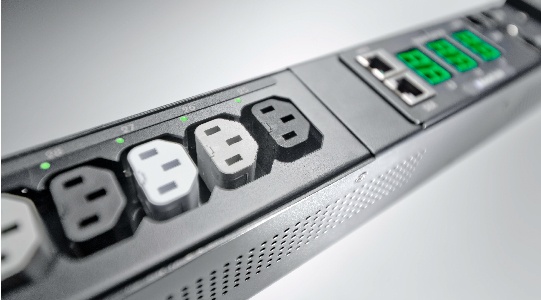The Top Benefits of True HDOT With Alternating Phase Outlets
Josh Schaap
March 06, 2018
- Categories:
- Power Distribution and Monitoring
- Tags:
- 3 Phase PDU

In the past, a standard rack only held about nine servers and consumed around 6 kW of power when running at full capacity. With this load capability, you could safely power a full rack using a single phase PDU (power distribution unit).
Times have changed, though, as the servers you are using today are slimmer and more powerful, which allows for much greater density in the rack. Now, you can fit about 10 times as many servers onto a single rack, which can save valuable data center real estate. For this reason, many data centers are now experimenting with higher cabinet densities to maximize output.
As convenient as this is, however, it also presents a challenge from a power management perspective. The more servers you add to a rack, the more power you will draw. A full rack of blade servers, for instance, can easily consume around 20 kW of electricity or more depending on your usage. Running a single-phase PDU with such a heavy load is a sure-fire way to trip your circuit breakers and cause a power outage.
So, what can you use to run high-density power loads both safely and efficiently?
Consider investing in Server Technology’s patented, market-leading High Density Outlet Technology (HDOT) Alternating Phase PDUs—specifically engineered for data centers with limited cabinet space and heavy power workloads. HDOT Alternating Phase PDUs deliver 3 phase power distribution to the rack, providing over 50 percent more electricity. With 42 C13 outlets in a 42U-high by 1U-wide device, HDOT offers the highest outlet density on a connected PDU.
Discover the only PDU to win multiple awards: HDOT with Alternating-Phase technology.
Here are the top benefits of using HDOT Alternating Phase PDUs in your data center:
Easier load balancing for 3 phase PDUs: Load balancing is necessary for reasons related to safety and power efficiency; unbalanced power loads, for instance, can cause uneven voltage and current measurements, which can be harmful to your equipment. Unbalanced loads can also trip your circuit breakers. Whereas load balancing can be a confusing and time-consuming task, HDOT simplifies the process with an alternating phase arrangement that will allow you to alternate phase pairs on a per-outlet basis. The result is less clutter and shorter cords.
Convenient size: Part of what makes HDOT so popular is its stripped-down, convenient size. When creating the HDOT product line, Server Technology’s designers removed all of the unnecessary material around each outlet. Like other PDUs in the HDOT family, the only thing that remains on the HDOT Alternating Phase PDUs is the core outlet structure, which makes them easier to mount in or around tightly packed cabinets.
High native cord retention: We’ve all been there: You’re performing routine maintenance in your data center and you accidentally bump into a power cord, causing it to disconnect from its outlet. It happens quite frequently in the data center, especially when moving equipment. Traditionally, the solution was to invest in expensive, custom ancillary cord-locking devices for each outlet. HDOT streamlines the process by using high native cord retention, which holds plugs firmly in place while they are attached to an outlet. So, once you plug a device into an HDOT Alternating Phase PDU, you can rest assured that it will stay exactly where you put it.
Custom configured: When purchasing an HDOT PDU, you can choose a configuration that meets your exact needs using Server Technology’s “Build Your Own PDU” program. The process takes just four steps, and is a walk through where you will select everything from your voltage, amperage and phase requirements to power input, orientation, outlets, connectivity and quantity preferences. This program can also be used to build HDOT Switched, Smart and POPS PDUs.
Thanks for your submission. One of our Power Strategy Experts will get back to you shortly.